Has the bewitching, world-famous destination lost its shine in recent years? Sarah Lane visits the northern Italian resort, Portofiono, to discover it has more to offer than ever…
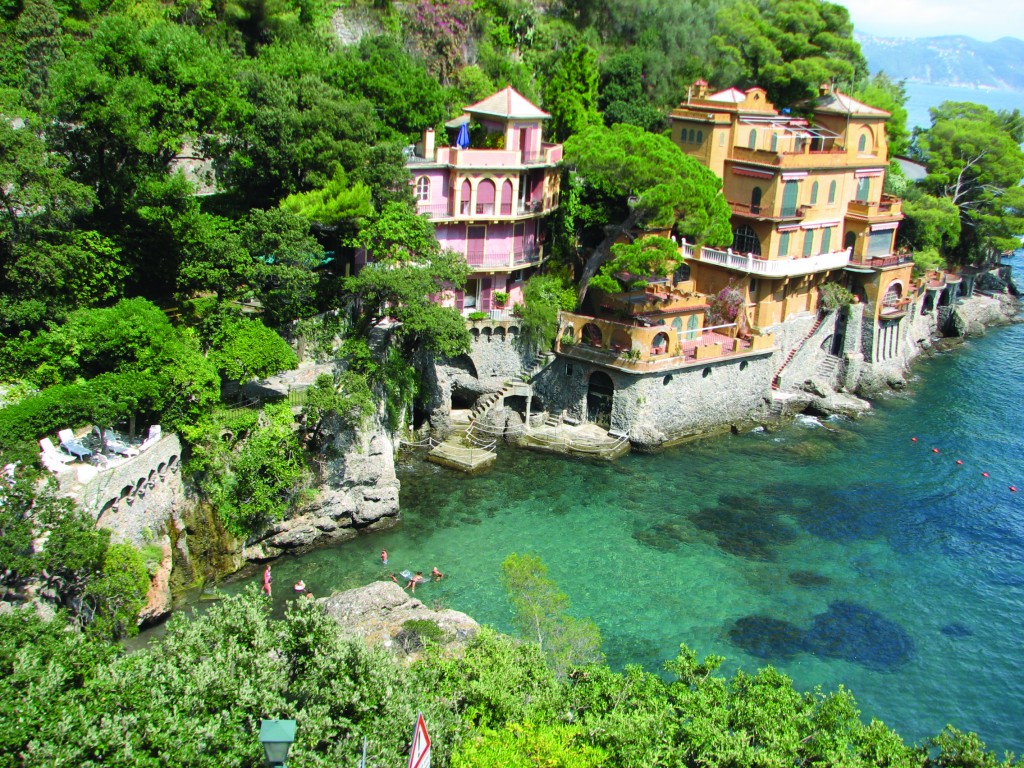
Portofino – the very name conjures up images from the 1950s of glamorous film stars rubbing shoulders with the world’s richest, most influential aristocrats and politicians. More recently, though, the exclusive destination has appeared in the gossip columns less and less. Has Portofino lost its appeal among the world’s elite?
Portofino is, in fact, still very much one of the world’s top spots for VIPs. Silvio Berlusconi has a long-term lease on a house – or rather castle – here, fashion designers Dolce & Gabbana have a pair of Portofino’s most exclusive villas together with their extensive estates, and stars such as Madonna and Sting have stayed in the area. Far from being out of fashion, Portofino has managed to refine its privacy strategies, offering a peaceful haven for VIPs to relax or frolic, largely undisturbed.
A peaceful haven is certainly the impression you get of Portofino, set as it is in a glorious position, surrounded by a beautiful natural park and a marine reserve, at the tip of the Portofino promontory, 35 kilometres south of Genoa. The village is tiny, with less than 600 inhabitants. Numbers swell during the busy summer months when temporary residents move into their holiday homes and there’s a constant to-ing and fro-ing of visitors on prestigious yachts.
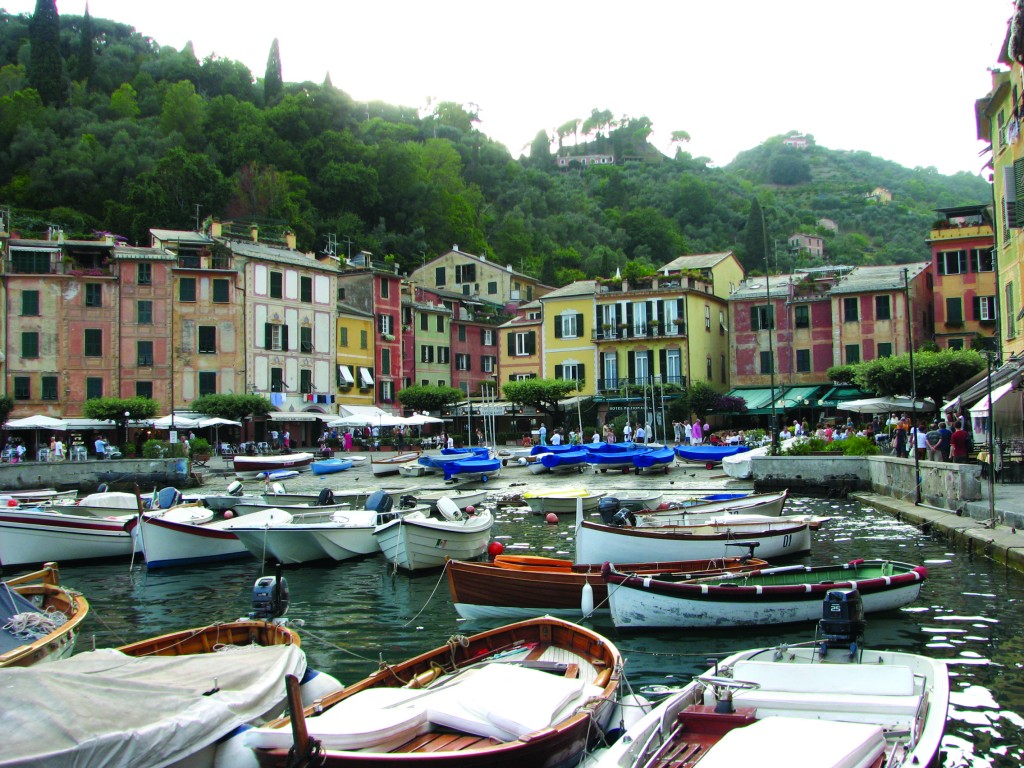
Referred to as Portus Delphini by Roman poet Plinius, Portofino has ancient origins that go back well before Roman times. The name Portofino, a corruption of that Latin name, has two possible origins: it either stems from the shape of the 3-kilometre long promontory, vaguely reminiscent of a dolphin, or, perhaps resulted from the fact that dolphins used to visit the bay. The stretch of coast going south from Portofino is still known as Costa dei Delfini, and the playful creatures can often be spotted in the sea. However, the name most frequently used for the area stretching from Portofino to Sestri Levante 28 kilometres to the south, is the Golfo del Tigullio, after the Tigulli people who lived in the area in the 11th century BC.
We visited the area in late August, when the summer season was coming to an end and things were winding down. Due to the tiny size of Portofino, Malaga (my travelling companion) and I stayed 5 kilometres down the coast in Santa Margherita Ligure, a charming seaside town and a popular holiday destination in itself. With a couple of hours to go before the sun went down, we decided to go straight to Portofino when we arrived. After dropping off our luggage we headed for the coastal ferry office.
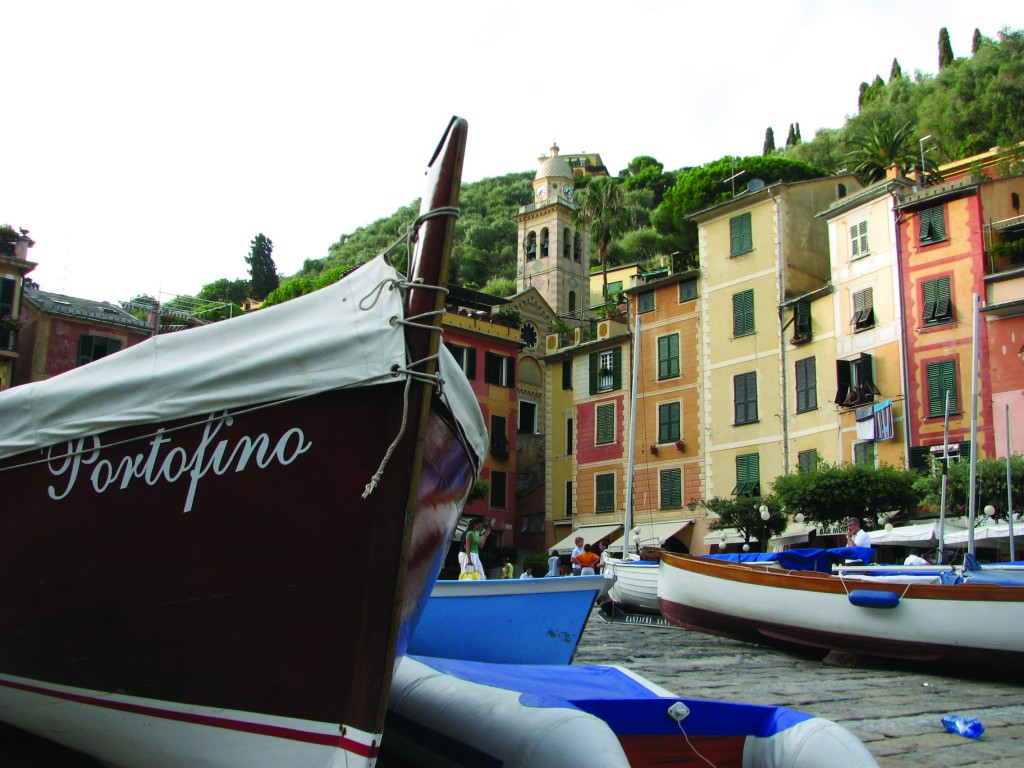
It was a beautiful afternoon with the vaguest hint of a breeze, but that ‘hint’ was a lot stronger further out and the ferries had been cancelled for the day. I consulted my timetables and found that we could catch a bus from the seafront in a few minutes – the experience of approaching Portofino from the sea would have to wait. The bus ride was a memorable experience in itself. In many places passing drivers had to go up on the kerb or down into the ditch. Driving to Portofino is inadvisable, particularly during the high season, and there is little parking when you get there. The village itself is pedestrianised, and even delivery vehicles are not allowed in after 10 o’clock in the morning. The bus journey, although hairy, was thankfully not too long.
On getting off the bus in Portofino, we realised that the road actually ended here. Beyond, a network of footpaths criss-crosses through the wooded promontory and up to Monte Portofino’s modest peak. My eyes lit up on this realisation, and Malaga, a keen walker too, but perhaps with more realistic expectations as to time and distances, cast me an anxious glance. We were here to find out about Portofino, not spend the weekend hiking, so we set off downhill towards the famous village square, known as the Piazzetta.
Portofino is simply beautiful – the juxtaposition of multi-millionaire yachts and the modest-looking facades of pastel-coloured former fishermen’s houses makes an idyllic scene. Add to that the backdrop of the evergreen wooded headland, which bends around to give the village a kind of protected, almost indoor feel, and the gently sloping mountain behind, and the effect is out of this world. The majority of shops are high-class designer, but the atmosphere, far from rarefied, is of peaceful relaxation.
A Place to wander
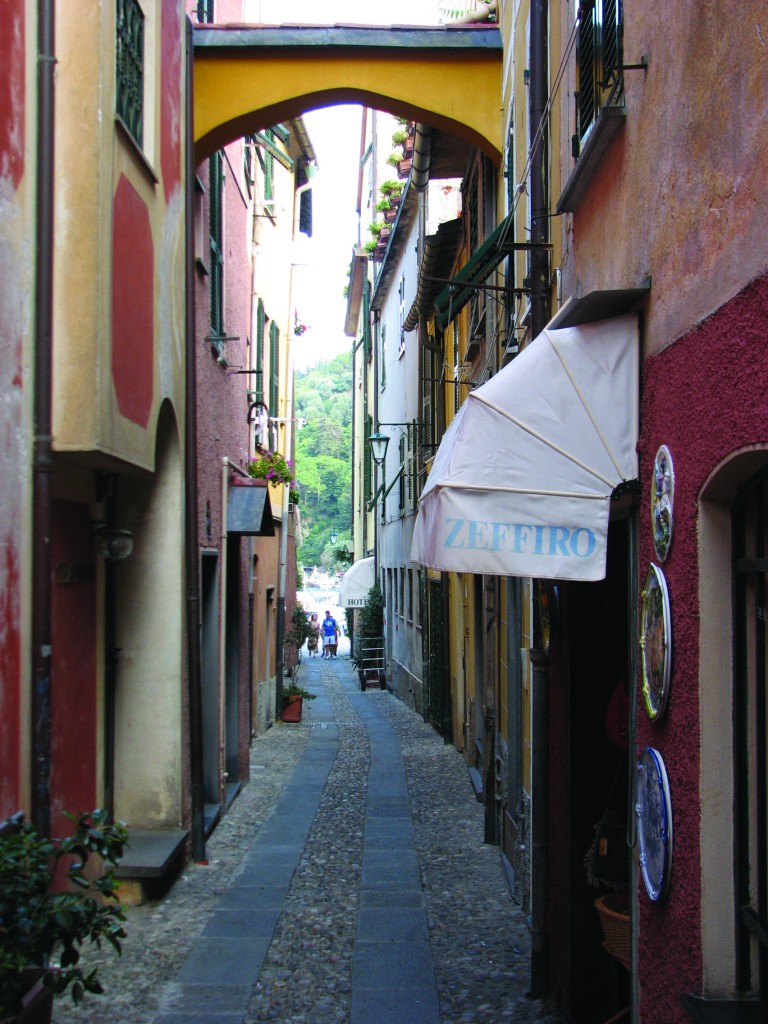
Planning to explore thoroughly the following day, Malaga and I decided to recover from our five-hour train journey by meandering around, which is really what visiting the village of Portofino is all about, unless you’re here for serious spending. Another popular pastime – people watching – is best done from the seafront Piazzetta, lined shoulder to shoulder with cafés and restaurants. Have a good look at prices before you sit down, though, as, while they are all on the expensive side, some places are more so than others.
If you’re an ice-cream lover, try the Gelateria San Giorgio, where you can enjoy a delicious home-made ice cream without breaking the bank. The local speciality, paciugo, is a filling concoction of ice cream, fresh fruit and cream. As well as fellow meanderers and the fabulous view, you can also watch the comings and goings on the water from the Piazzetta, or stroll down to the Yacht Club side of the harbour and be dazzled by the luxury models on show. They certainly whetted our appetites for getting out onto the water.
The next day, the wind had dropped so the ferries were running. We got the first one from Santa Margherita Ligure – known as Santa to the locals – for the 15-minute trip to Portofino. Turning the corner into the port, the view is stunning, and the village itself, while charming in the dusk, is startling in the morning sun. One of the best places for views over Portofino is from outside the church of San Giorgio, a short climb from the harbour. On the way up you pass the curious statue garden, where modern art sculptures rub shoulders with exotic plants. You also pass the Terrazza – a low-walled viewpoint above the Yacht Club, where paparazzi cluster to zoom in on VIP yachts.
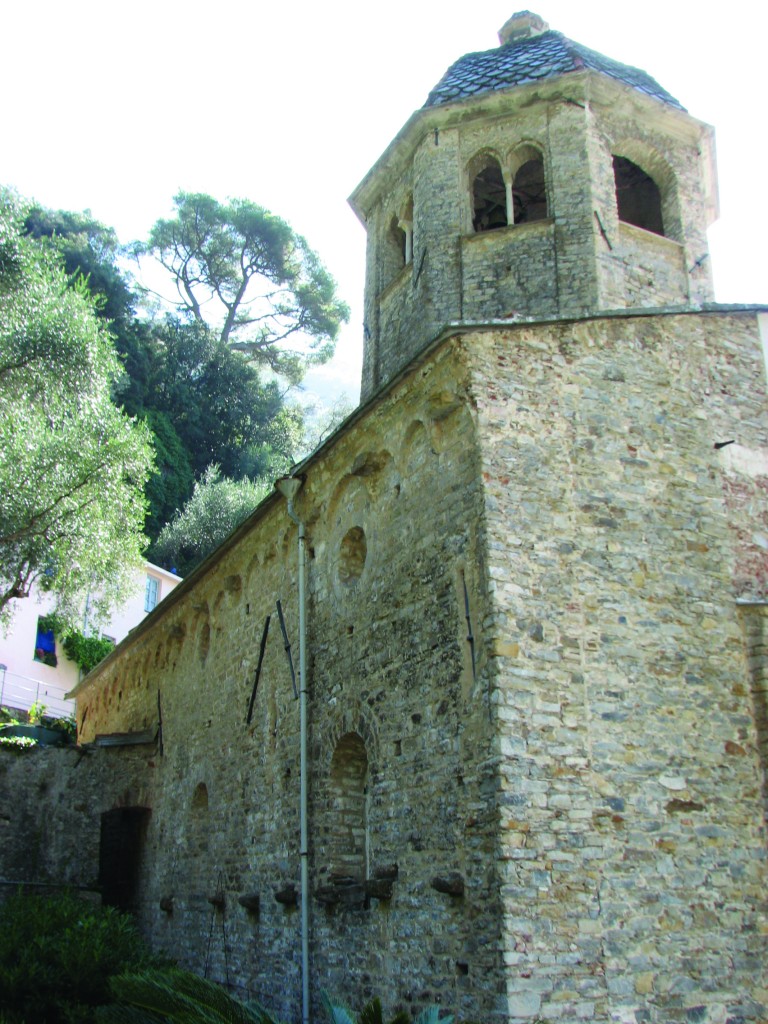
Reaching the church, it dawned on me that the St George flags I’d noticed, particularly flying from this cliff top, were nothing to do with the English residents and visitors, but were symbols of the local patron, St George! The simple church, dating from 1154, but rebuilt in the 1950s after extensive war damage, contains relics of the saint.
From outside the church, the narrowest part of the promontory, you can see over Portofino on one side, and the more rugged open coastline on the other. A short stroll further on brings you to an even better vantage point – Castello Brown. It’s named after the British consul in Genoa, Montague Yeats Brown, who bought the castle in 1870 for the modest sum of 7,000 lire, when it was in a serious state of disrepair. He did a great job of renovating the castle, which dates from the Middle Ages, in full respect of the original character and design. Today it hosts temporary exhibitions and events – even weddings – but it’s probably the views from the garden that make the castle so special.
Instead of going back down to the village, we carried on from the castle to the end of the path, and on to the lighthouse, passing scented pine trees and luxury villas behind high walls and gates, along the way. Reaching the lighthouse you’re rewarded by magnificent views, as far as Corsica on a clear day, and a small but well-stocked bar at the viewpoint.
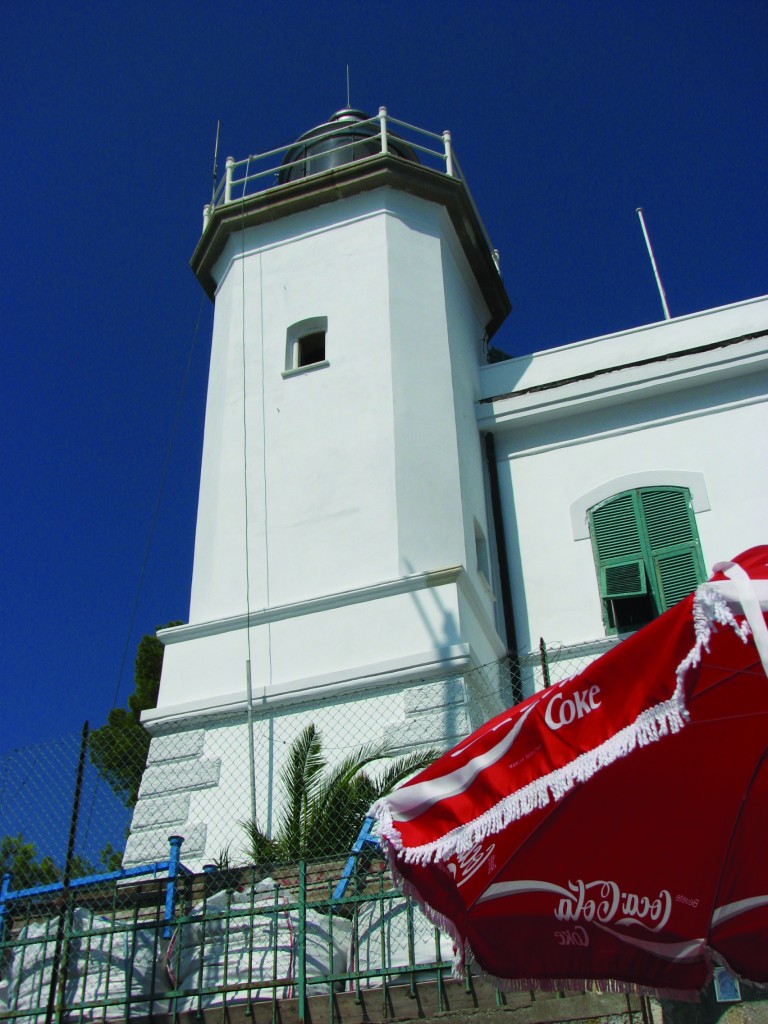
After walking back to Portofino, we opted for a swift take-away lunch, filling up with delicious slices of local speciality focaccia and pizza from Canale, Portofino’s historic bakery. The shop has been here since 1911, and we were served by old Sig. Canale himself, proud to be still on the ball at 89. He told us that his recipe for good health is eating some of his own focaccia daily. He even gave us a free sliver of the freshest, quoting a dubious local proverb about giving free focaccia when there’s going to be a storm tomorrow – I hoped not, as I had plans that involved boats and cliffside footpaths.
San Fruttuoso
As it turned out, the next day brought even better weather, but not wanting to tempt fate, we set off early before waiting to see if the ferries would be running. Once again we had to get the bus to Portofino, but, early in the morning with far less traffic, the journey was less traumatic. We shared the bus with a group of chambermaids and waitresses, going to work at the hotels and villas in Portofino.
We found that Canale the baker opened early even on a Sunday morning, so stocked up with various bits and pieces – onion focaccia for me, and sage-flavoured for Malaga – and hit the footpath. After the initial, seemingly never-ending, flight of steps, the track levelled out and we spent a fantastic morning on the coastal path, surrounded by pine woods, breath-taking views and near silence – the only sounds being the waves breaking on the cliffs 200m below, and the birds going about their daily business above us. When we reached our destination two hours later, we hadn’t seen a single person.
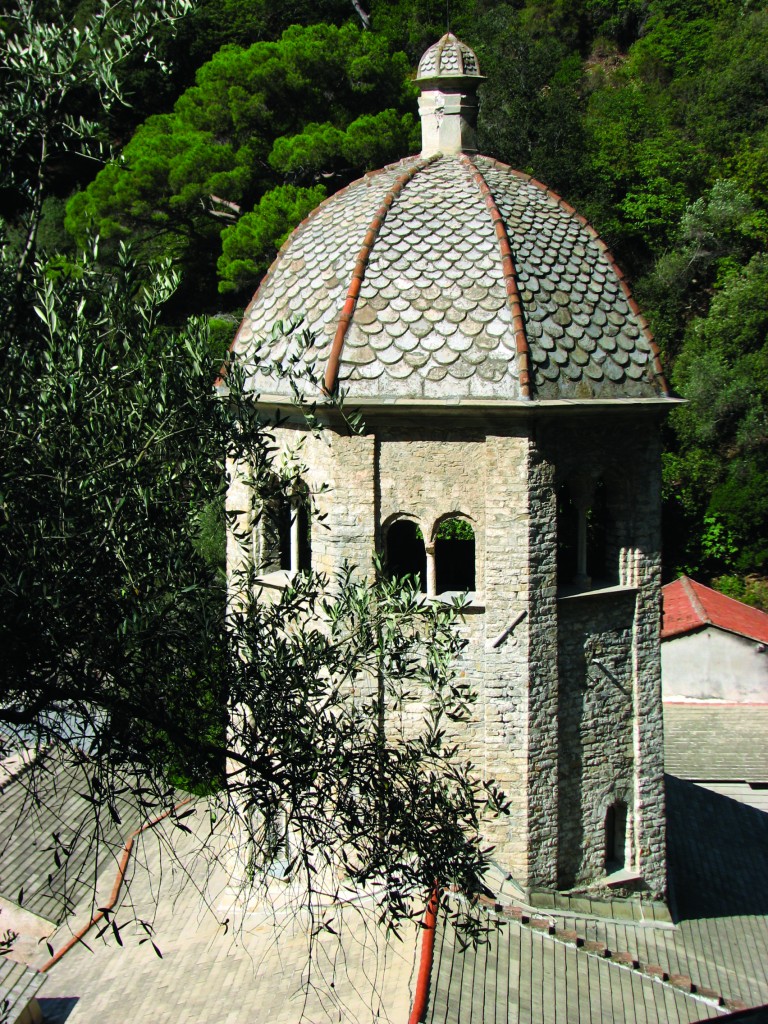
I’d made it – San Fruttuoso has been on my list of places to visit since my first trip to Liguria over a decade ago. The abbey and village can only be reached from the sea or on foot from Portofino to the south and Camogli to the north – a couple of hours’ walk from each. As you can imagine, this hidden cove is a real gem. Donated to the Italian Foundation for the Environment (FAI) in 1983, the 10th-century abbey, abandoned in the 16th century by the monks and used as housing for fishermen for centuries, has been carefully restored and is open to the public. Another unique feature here is the Cristo degli Abissi – a 2.5m high statue of Christ, dedicated to all those lost at sea. It stands 17m below the surface of the water at the entrance to the cove. For a few euros a taxi boat will take you over the statue, but unless you have diving gear you can only see it when the water is calm.
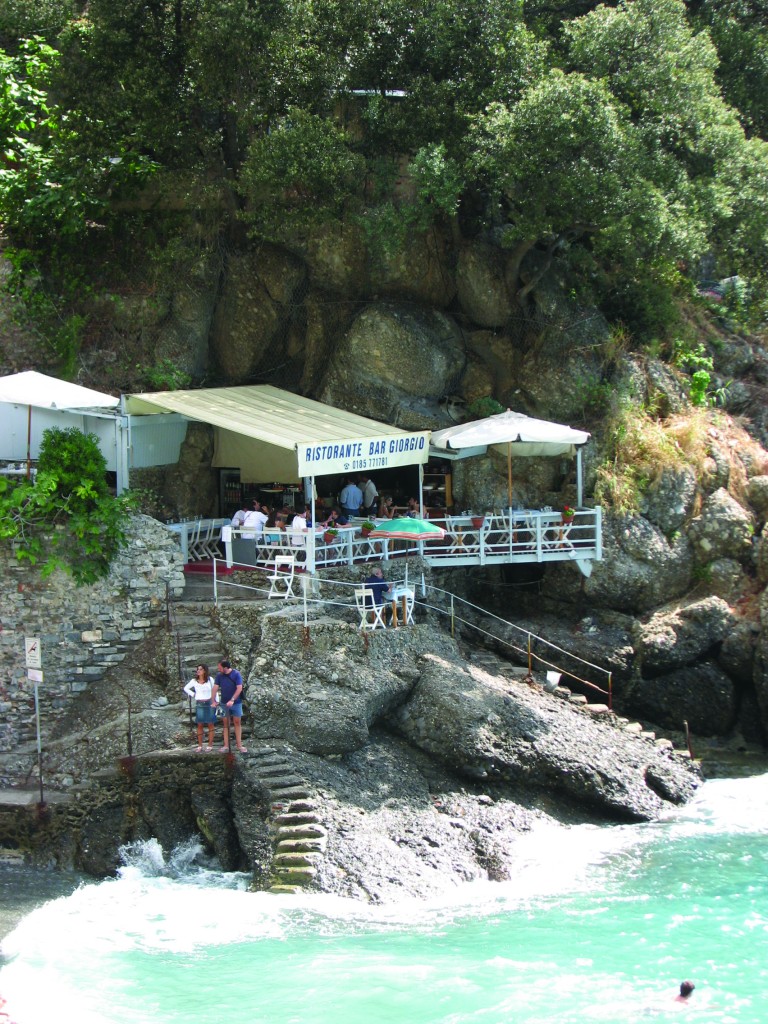
As we’d descended the path into San Fruttuoso, we’d seen that the ferries were running today, so, with time to linger, we enjoyed a delicious lunch at one of the excellent beach bar restaurants, before joining the ferry queues. The Portofino boat was largely empty, so we could enjoy the bracing half hour journey in comfort.
Winding down
Back in Portofino we took one last lingering look around the Piazzetta: at the former fishermen’s homes with their coloured facades, which hide luxurious interiors, at the smart and trendy bars and the boutiques with their sky-high prices.
In the evenings, when the last boatload of day-trippers leaves, Portofino winds down and some of the attention-shy VIPs come out of hiding. Unfortunately, we too had to head back to Santa and to our train home. Portofino is definitely a place to return to, perhaps in the quieter low season or during May when the sea comes alive with a series of regattas. But the main reason for returning is that I now know about the Portofino promontory and its fabulous footpaths, little used by most visitors here, but well organised and well maintained and just waiting to be explored.
